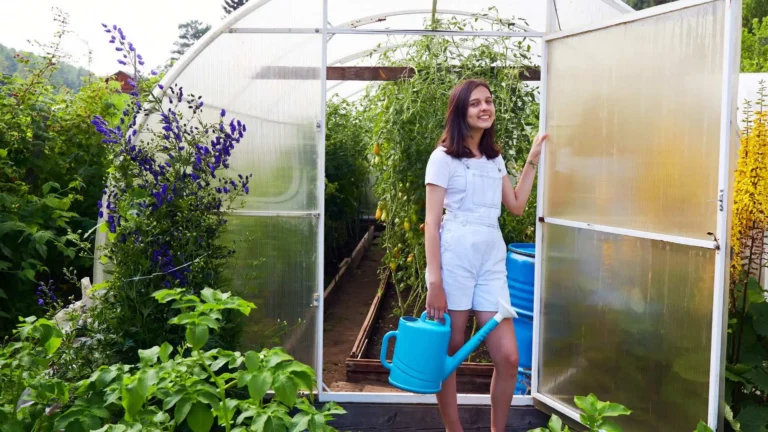Table of Contents
Free Greenhouse Dreams
Dreaming of growing your own fruits, vegetables, or flowers year-round—but worried about the cost of setting up a greenhouse? You might be surprised to learn that government programs in some regions offer free or heavily subsidized ones to individuals, schools, community groups, and even small farmers. These initiatives are often part of broader efforts to support sustainable agriculture, food security, and environmental education.
This guide will explain how to find and apply for these programs, what eligibility requirements typically look like, and what kinds of greenhouses are offered. Whether you’re a beginner gardener or an aspiring grower looking to expand, getting government support can be a game-changer for your green-thumb goals.
Understanding Government Assistance Programs
Social protection programmes are essential for individuals and communities wishing to build their capacities in agriculture. Most of these programs provide grants, rebates, and financial support to help pay for construction and maintenance costs.
Federal Grants and Subsidies for Greenhouses
There are many grants and subsidies available to help with agricultural projects at the federal level. Several programs from the United States Department of Agriculture (USDA) support local farmers and encourage sustainable agriculture in various forms.
A program like the Environmental Quality Incentives Program (EQIP) offers financial and technical help for adopting beneficial projects on a farm.
State and Local Government Initiatives
Besides federal programs, there are also government organizations that attempt cultural development. These also administer grants and no-interest loans to individuals from farmers and guardians who want to improve their lives. The following sites are your best source of information about scrap availability and state agriculture and forestry departments.
Non-Profit Organizations Offering Grants
You also note that non-profit organizations are instrumental in supporting agricultural projects. Organizations like the National Sustainable Agriculture Coalition and the American Community Gardening Association offer grants and other opportunities to enable individuals, communities, and organizations to set up greenhouses. These organizations promote agricultural practices for and within communities.
Read related blog: Understanding Government Schemes for Unemployment Support
Research Government Agencies and Programs
The key here is to do in-depth research on what programs and agencies provide grants so that you select the best fit for this purpose. These different arms of government are responsible for agricultural support.
USDA’s Natural Resources Conservation Service (NRCS) and EQIP Program
The Environmental Quality Incentives Program (EQIP) is one of the USDA’s most well-known sources of funding for projects. It is administered by the Natural Resources Conservation Service (NRCS). Eligibility: It provides financial assistance for installing conservation practices that benefit soil, water, and air quality.
State Departments of Agriculture and Forestry
Each state’s Department of Agriculture and Forestry provides many programs to help with domestic farming. These departments often have grant programs to promote agriculture, such as sustainable landscaping or greenhouse building.
The Environmental Protection Agency (EPA) and the Clean Water Act
EPA grants from the Clean Water Act can also fund water quality improvement projects. Although these grants are not intended strictly for use in greenhouses, growers can apply for them and upgrade to more water-saving systems.
Read related blog: How Do You Apply for A Free Tablet From the Government?
Build a Strong Grant Application
A great grant application can distinguish success from going home empty-handed. To be eligible, applicants must show that they qualify as a non-profit organization (we will work with organizations of all sizes to determine the best arrangement) and provide an in-depth project proposal.
Eligibility Requirements and Application Process
It is also essential to know each grant’s eligibility and application details. Eligibility projects, qualifications of the applicant, and anticipated outcomes vary based on the criteria. Have your papers with these requirements!
Develop a Comprehensive Project Proposal
The proposal details the project goals, methodologies to reach these goals, and expected viability results. To prove the project’s viability, detail your project plan, budget, and timeline.
Demonstrate Environmental and Economic Benefits
Highlighting the project as a greenhouse gas and its positive effects on other levels, such as environmental or economic, can also boost this application. Emphasise how the project will drive sustainability, food security locally, and economic opportunities.
Secure Letters of Support
Strong local letters of support, particularly from the community (even better if they’re letters signed by elected officials with quotes in solidarity) and agricultural experts, can help strengthen an application. These should be letters of support that verify that the applicant is a positive and impactful addition to the community.
Read related blog: How to Get a Free Car from the Government: Best Options
Alternative Funding Options and Partnerships
Although grants are a great option, there are other funding resources and partnerships you might consider to get your project for free.
Local Communities and Schools
For example, collaborating with local communities and schools can open the door to other financing solutions. Many social programs, such as community-supported agriculture and educational initiatives, receive grants or donations to create projects that will help support residents.
Crowdfund and Community Support
Sites like Kickstarter and GoFundMe have proven invaluable tools for finding financial backing. Having outreach channels on social media, conducting a campaign, and building community support can bring donations or sponsorships.
Business Partnerships and Sponsorships
Local businesses could provide financial support and resources. Many companies will support your agriculture project as long as it matches their corporate social responsibility goals.
Bank Loans and Credit Lines
Loans and credit lines are not free money, but lending could be a way for you to finance your new project. Many agricultural banks offer many programs for the broken, with terms and conditions that can suit every project.
Read related blog: How to Get Free Solar Panels from the Government?
How to Maximize Your Chances of Success
To give a plant the best possible chance of receiving funding—which is, after all, one purpose and benefit of network building in academia—it has to not only know about new potential great match opportunities (e.g., grant announcements) but also have planted notes with key decision makers as they crop up at career conferences.
Network with Other Greenhouse Growers
Networking with other growers can be helpful. Connections can be found through local and state agricultural associations and online forums, where support is often given regarding applying for grants.
Attend Agricultural Conferences and Workshops
Agriculture Conferences and workshops are great platforms for learning about recent trends, updates on new machinery technology, and funding sources. They also offer networking opportunities with experts and potential partners.
Build Relationships with Local Government Officials
Having a relationship with local administration officials can be helpful. Officials can give advice, write recommendation letters, help with scholarships, and help with funding.
Monitor Opportunities and Deadlines
It is essential to check on grant deadlines in the old-fashioned way, or more days a week. Sign up for newsletters, subscribe to the relevant mailing lists, and set alerts for new funding opportunities.
Read related blog: How To Receive Free Stuff From Amazon
Conclusion
Getting a free greenhouse will take some work. You’ll need to do your homework, make it look legit or real, and simply get chummy with the right people. Those who become familiar with the different programs, work on submitting a compelling proposal, and explore alternative ways of financing can be readier to join the ranks of future greenhouse owners.
While you wait for the administration’s approval, download the Beem app now and use the Everdraft™ feature. It lets you borrow instant cash to help during emergencies, providing that extra financial cushion when needed.
Frequently Asked Questions (FAQs)
Are there any government programs that provide free greenhouses?
Yes, many schemes offer grants and subsidies for construction. There are dozens of these federal, state, and local programs.
What are the eligibility requirements for greenhouse grants?
While eligibility requirements vary by program, they usually relate to the kind of project you are proposing, your background and experience, and the total and economic benefits that will be achieved if funded. Please review program-specific requirements for more information.
How can I increase my chances of getting a greenhouse grant?
To improve your odds, research what programs are available and have a solid application with the environment, demonstrating the program’s economic impact. Connecting with other cultivators and acting on yourself by becoming involved in local cannabis conferences or initiating a positive connection with your town officials might help simplify things for you.















































